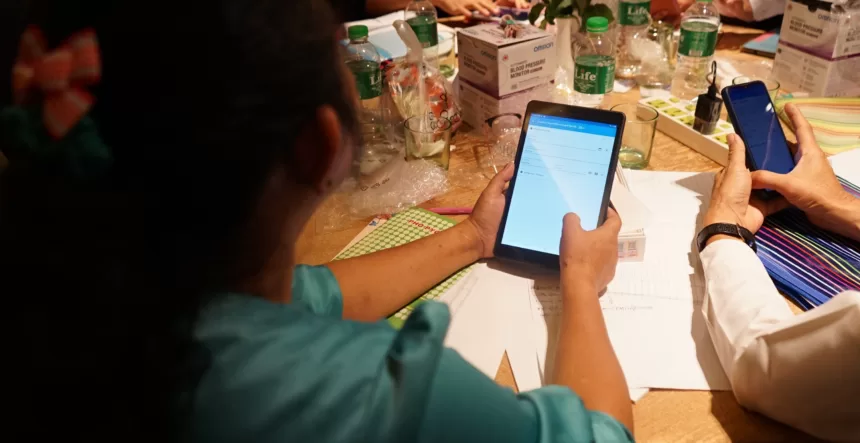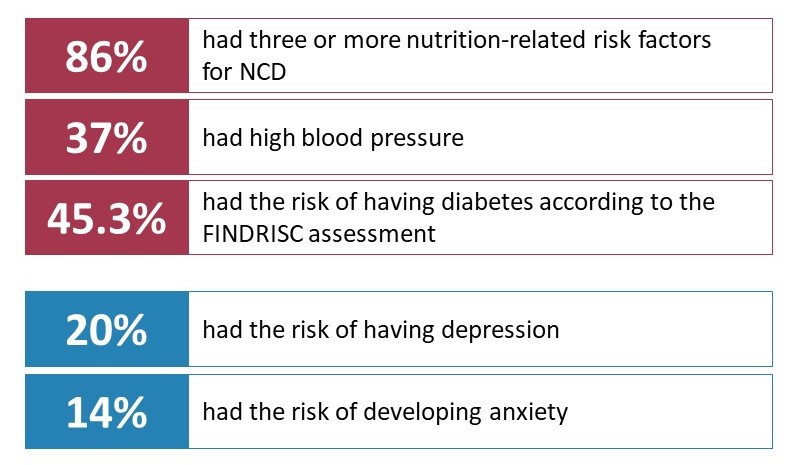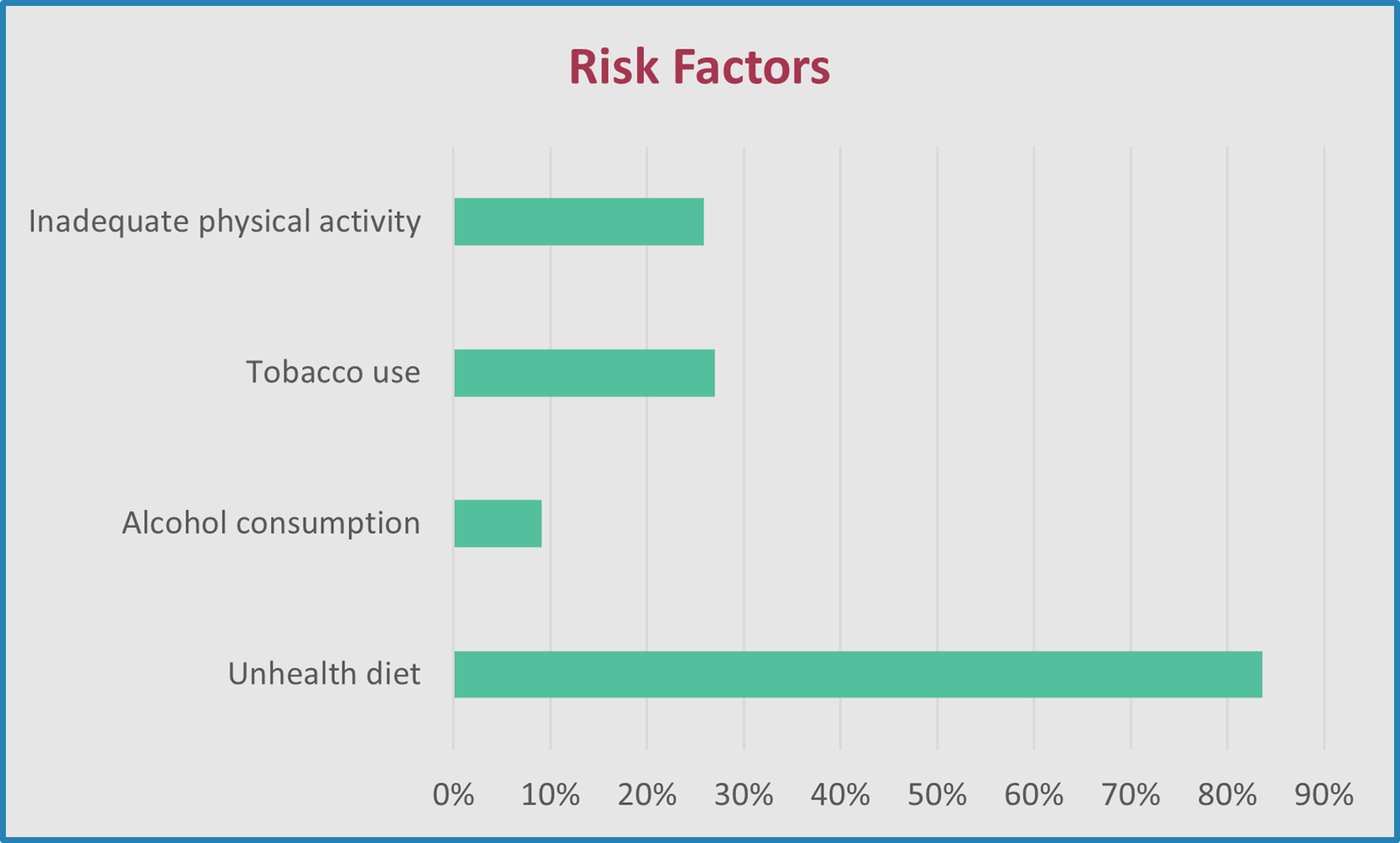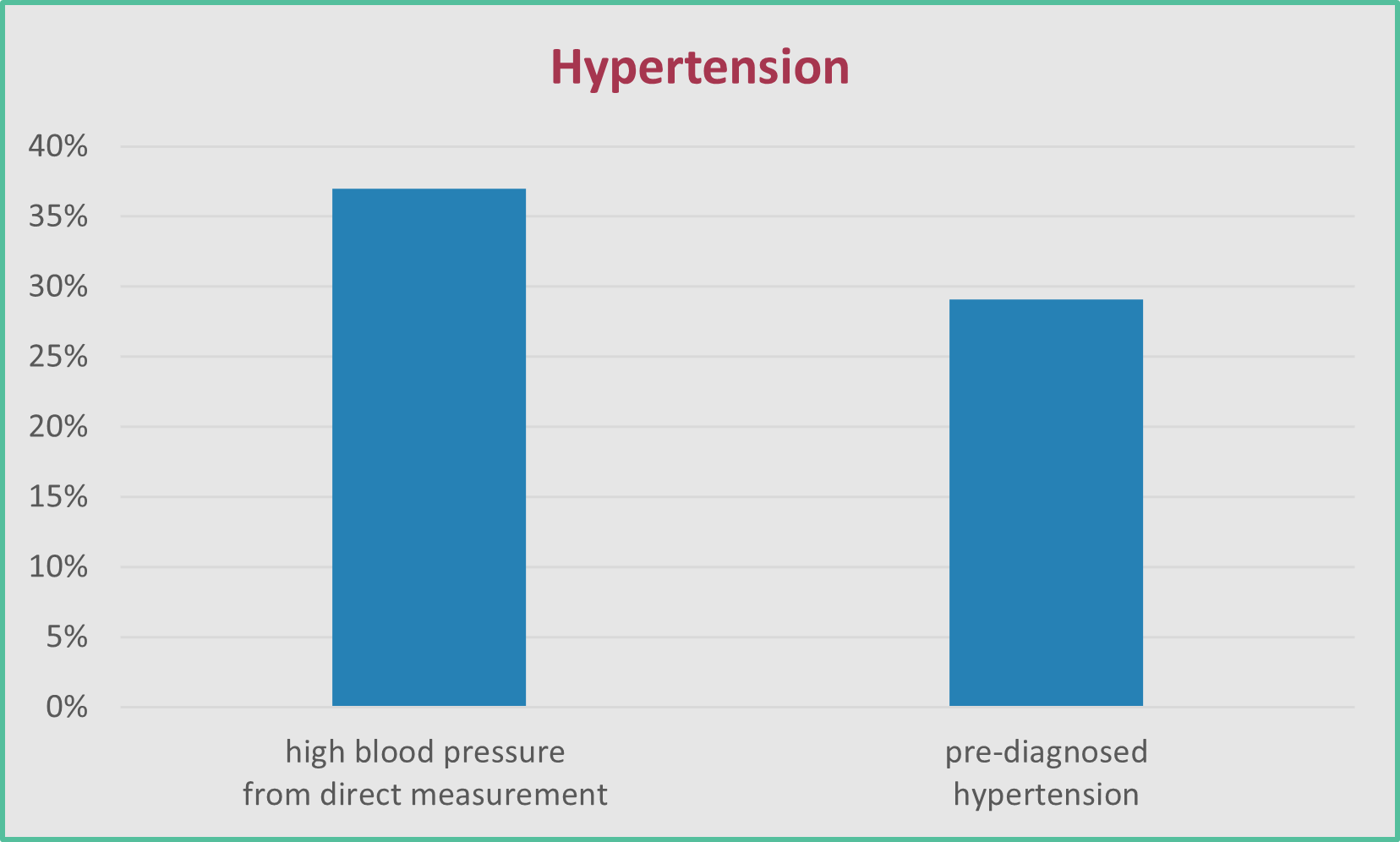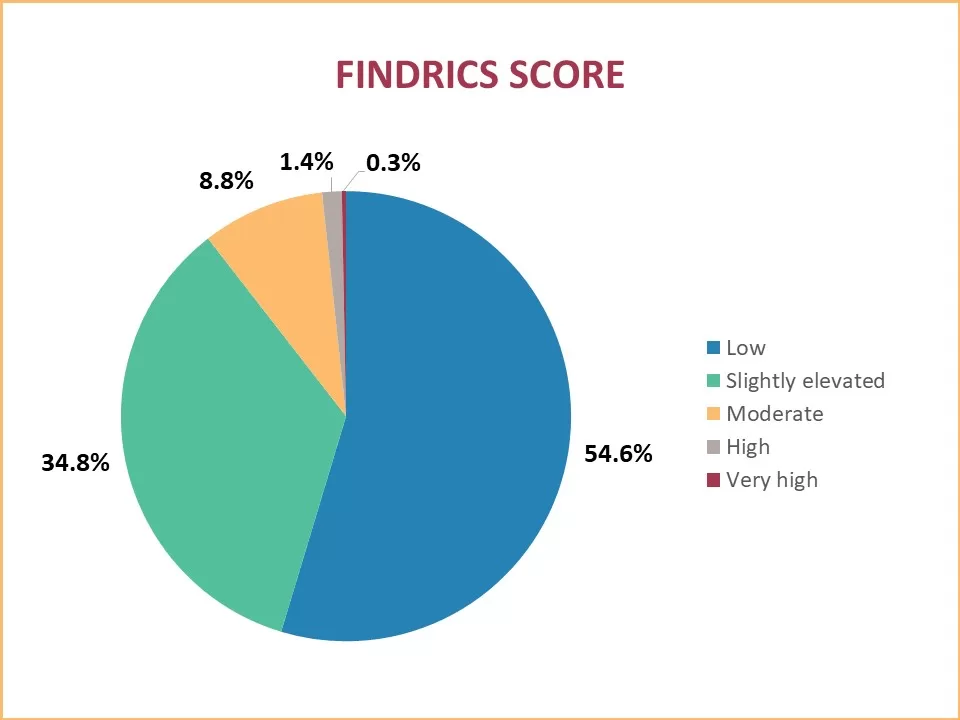SUNI-SEA NCD self-care application
As in other lower- and middle-income countries, non-communicable diseases (NCDs) are a significant and increasing public health issue for the Myanmar population. Of all deaths in Myanmar in 2016, 68% were caused by non-communicable diseases (NCDs), up from 49% in 2000.[1] With the ongoing COVID-19 pandemic and political instability, access to healthcare facilities in Myanmar is limited. In July 2022, the Scaling-Up NCD Interventions in South-East Asia (SUNI-SEA) project team in Myanmar launched an NCDs and mental health self-screening mobile phone application, based on DHIS2 Tracker. The aim of the application is to provide the opportunity for people to conduct essential self-screening for NCD risk factors. The screening application is currently used by communities in four regions of the country: Ayeyarwady, Mandalay, and Yangon, and by communities in the Shan State self-administrative division.
By answering the questionnaires in the mobile application, users have the opportunity to identify whether they are at risk of diabetes, hypertension, cardiovascular diseases, and mental health conditions. For the screening for risk factors for diabetes, “FINDRISC Score”[2] was integrated into the application’s screening process.
Early identification of risk factors for NCDs is very important, as NCDs such as hypertension and diabetes may go undetected until they have caused serious health issues. Awareness of NCD risk factors can help to motivate the user to modify their unhealthy practices, and to seek further assessment and services from a healthcare provider.
This self-care application stores the user’s data on their mobile phone and allows them to track their health over time. If the users give approval, their data can also be uploaded anonymously to a project database for further analysis by the project team. In addition, the application has a GIS system, which provides information on the number of people who use the application in those locations. All data of individuals is strictly confidential.
Available on Google Play https://play.google.com/store/apps/details?id=com.dhis2.debug&hl=en&gl=US
Application users
When NCD risks are identified early, people can modify unhealthy practices, and seek support for prevention and management of NCDs. When people use the app, they can also access the useful health promotion information included in the screening process. Availability of community-based screening also contributes to reaching more people where they live and reducing the burden of disease in the future.
Key findings
The data collected from this application is now only for benefits of the individuals using it, but in the future, it will also help to strengthen linkages with local health care managers and community volunteers, so that they can better understand the health status of the population in their area, and design health services and community interventions accordingly.
Some of the striking figures from the small sample who started using the app so far:
Risk factors
The four major behavioural risk factors for NCDs are tobacco use, alcohol consumption, inadequate physical activity, and an unhealthy diet. Nearly 7 in 10 users were identified with these risk factors, also called modifiable risk factors. The good news is that the effect of these risk factors can be reduced with lifestyle changes. While alcohol is not widely consumed among people using the application (less than 10%), one in four of those screened used tobacco.
An unhealthy diet or poor nutrition quality has been identified as a leading determinant of NCDs. 83.6% of those who screened were found to have three or more nutrition-related risk factors for NCD, including overeating high fat, salt, and sugar, insufficient consumption of fruit and vegetables, being overweight, or obese. Among them, the number of women (62.1%) with nutritional risk factors is significantly higher than men (37.9%)
The majority of people screened (74.1%) met the minimum standard for physical activity, which equals to 70 minutes of vigorous physical activity such as running, or 150 mins of cardio exercises like brisk walking or cycling per week.
High blood pressure
Data suggests that one-third of the users (37%) had high blood pressure from direct measurement during screening, and almost 30 per cent had pre-diagnosed hypertension which is defined as a systolic pressure from 120-139 millimetres of mercury(mmHg) or a diastolic pressure from 80-89 mm Hg. If not detected early and treated appropriately, hypertension can lead to heart attack, stroke, renal failure, and even death.
Alcohol consumption, being overweight, age, and being diabetic are also associated with hypertension, which is the leading risk factor for cardiovascular diseases (CVD). Data show that 7 percent of users got the highest CVD risk level (30% or more).
Mental health
Mental health has become one of the leading issues among the population, as the country has suffered severe blows from the political turmoil, deep economic crisis, and the COVID-19 outbreak. For mental health screening, the self-care application focuses on identifying the risk factors for three primary mental health disorders; anxiety, depression, and post-traumatic stress disorder (PTSD).
The data show that nearly two third of the application users were screened for anxiety and depression, and almost 20 percent had a depression risk; above 14 percent had an anxiety risk. Additionally, 11.5 percent of application users were screened for PTSD.
It must be noted that data collecting on feelings and emotion can be a challenge, as it might not reflect the authentic feelings of the person answering the questions. Nonetheless, it helped some people to better understand their mental health condition ”When I check my mental health situation with the app, I found out I suffer from anxiety. When I trained others on how to use the app, I discovered I was not the only one suffering from anxiety.” said a community member from Shan state.
Diabetes
The notable risk factors associated with diabetes are increasing age, urban residence, high triglyceride levels, and a big waist circumference. 55.8 percent of the users discovered they have a large waist circumference. Excess fat carried around the waist not only causes type-2 diabetes but can also increase the risk of high blood pressure, high [blood] cholesterol, and heart disease, even at a healthy or average weight.
69.4 percent of people using the application supplied sufficient information for doing the FINDRISC assessment. Of the people for whom a FINDRISK score was done, 45.4 percent were at risk of becoming diabetes. The rest of the people screened were at low risk of developing diabetes.
After screening for risks of NCDs and receiving the score, application users can access health promotion information to improve their knowledge about the prevention and management of NCDs and mental health. According to the data, 9 in 10 users accessed health education in mobile apps, and 20 percent received advice from HelpAge’s Inclusive Self-Help Group volunteers.




